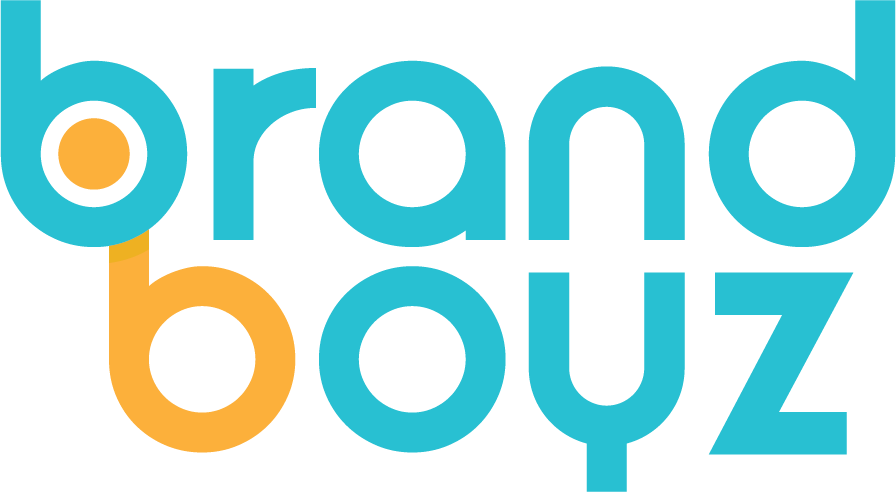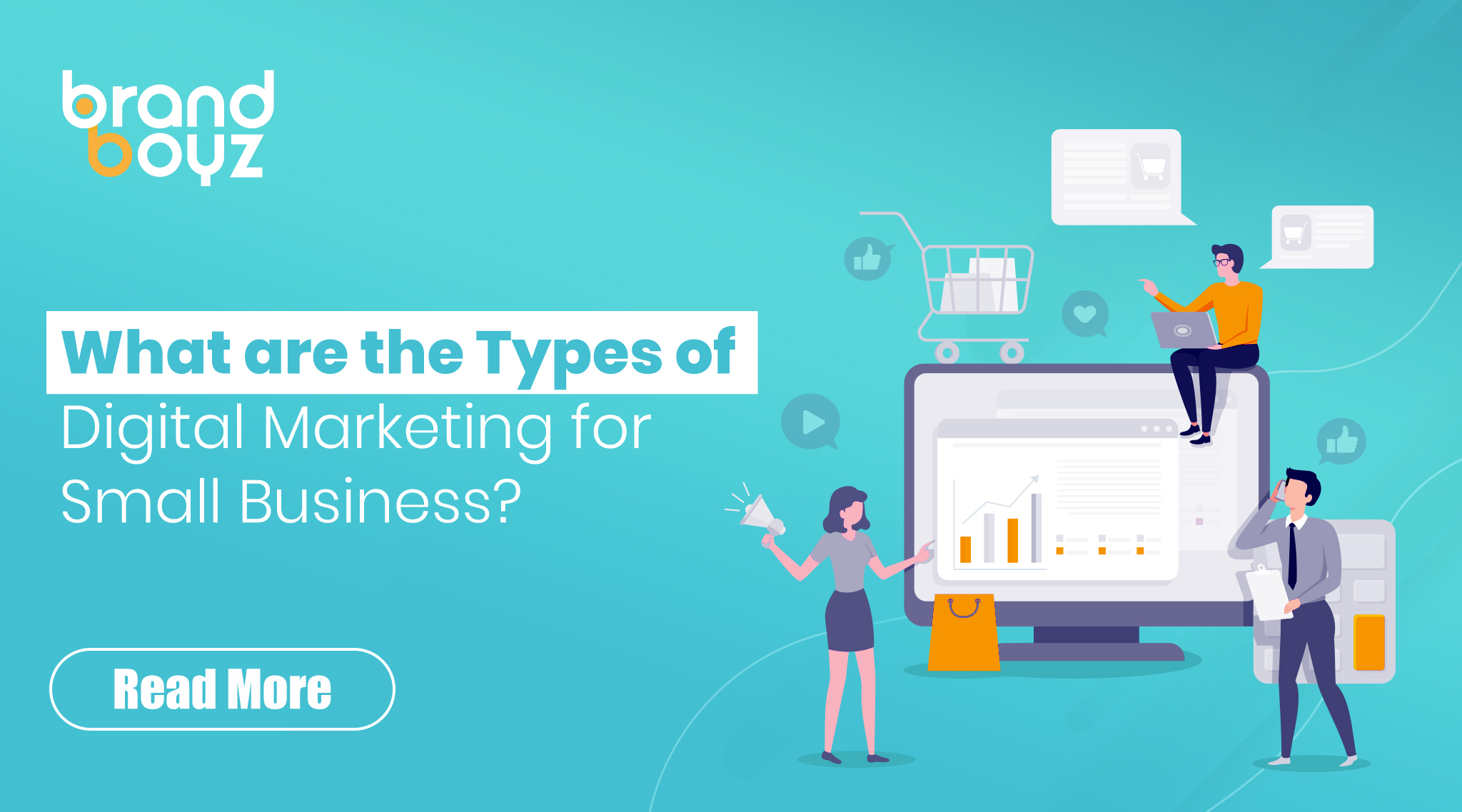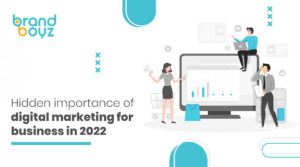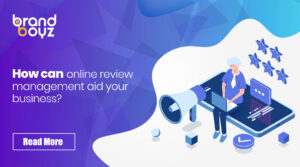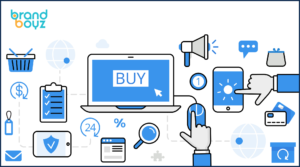When you’re running a small business, you have to work extra hard to get people to notice you and your products. Even though there are tons of advertising options out there, the majority of them aren’t actually worth the money when it comes to small businesses. So what’s the solution? Keep reading to find it out!
Digital marketing has become an essential part of business success in the 21st century, with a wide variety of platforms and channels designed to reach customers both online and off. And seeing the popularity of marketing online, it can’t be uncovered that Digital marketing has taken the world by storm. It seems that everyone and their mother has some sort of presence on social media, and if you don’t have one yet, you could be falling behind in your competition.
But how do you go about doing digital marketing for your small business? However, there are many different types of digital marketing out there, each with its own pros and cons and goals that they accomplish best. Here are the top seven types of digital marketing you can use to reach your small business’s target audience, which we’ll cover in more detail below.
Types of Digital Marketing for Small business
- Search Engine Optimization
SEO is a strategy designed to improve your search rankings and attract new visitors. Some digital marketing channels, like SEO, can provide continuous traffic as long as you continue to invest in them. SEO isn’t something you do once and forget about it—you need to continually monitor your search rankings and make adjustments accordingly.
Use Google Analytics to measure your performance (check out how many people visit my website?). One quick tip is to run AdWords ads that ask users questions based on their search history: if they click on one of these ads it indicates intent or users are actively trying to find information related to what they searched for. In other words, all signs point towards real-life customer behaviour!
- Social Media Marketing
With an established presence on social media, small businesses can increase brand awareness and drive traffic to their websites. Small businesses with a strong online presence are more likely to attract new customers. But it’s not enough just to set up shop and start posting content – small businesses need to engage with followers and provide interesting, relevant information in order to build trust.
Of course, it’s also important that your posts are consistent with your business’s brand values, so make sure you have those in place before you start sharing updates across all your channels. Here are some other tips for starting a social media marketing campaign.
- Email Marketing
Like direct mail, email marketing can be mass or personal. And like direct mail, it requires a marketing budget. Email is a very effective way to reach your customers—or potential customers. Email marketing typically has an open rate between 20 and 50 percent. With such high response rates, you’re more likely to turn leads into paying customers when compared with social media platforms or search engines (which have dismal response rates).
Keep in mind that email can be intrusive if used incorrectly; use caution when crafting your emails. Think about how many times you get spam each day. That’s what will happen if your email isn’t relevant to your audience. Avoid being labelled as spam by making sure that every single one of your emails contains a value for readers.
This could mean including links to useful articles, tips on how they can improve their business, or even including a special discount just for them. Just make sure not to send too many sales-y emails out at once: no one likes getting spammed! Instead, space out content so that it feels less like spam and more like the information they’re receiving because they signed up for updates from you.
- Influencer Marketing
If you’re in a market where people are actively looking to purchase, influencer marketing is an extremely powerful way to get your brand out there. By aligning yourself with someone who has a relevant audience, you can produce content that gets shared on social media, organically reach potential customers and build brand awareness. The best part? You only pay them when they do what you ask—meaning no upfront costs or risk to your business.
We like working with micro-influencers (people with 10,000 to 100,000 followers) because their audiences tend to be more engaged and authentic than larger influencers. However, if you have a big budget and want something even more targeted than micro-influencers, look into nano-influencers (those with 1,000 to 10,000 followers). They’re typically more affordable as well. In general though: don’t bother working with anyone who doesn’t have at least 1k followers! It’s not worth it from a return on investment perspective.
- Paid Ads
Paid advertising offers a way to reach consumers you normally wouldn’t be able to—you pay when people click on your ad. There are a number of different types, but all paid ads are represented by an image or video and text describing what you offer. This is a popular option among small businesses that have very limited funds and want to get their name out there but don’t have much in terms of time or money.
Paid digital marketing options include Facebook ads, Google AdWords, Bing ads, LinkedIn ads, and more. The downside? Paid ads can become expensive fast. The upside? They work! In fact, 63% of marketers who use them say they drive sales.
- Mobile Ads (Display)
Mobile ads are a crucial part of any small business’s marketing strategy because they help you connect with consumers who are out and about. You’ll want to make sure your ads look good on all different types of mobile devices and screen sizes, or else you could lose customers who are interested in your services, but might not click through on an ad that isn’t formatted correctly.
Fortunately, there are companies that specialize in making attractive mobile ads for businesses like yours. The key is to find a company that uses state-of-the-art ad tech, has an easy setup process, and offers competitive pricing so you don’t have to spend too much money to reach new customers.
- Content Advertising
With content advertising, you offer valuable information in exchange for an email address. This type of digital marketing works best with B2B (business-to-business) companies that are working on lead generation or any type of long-term communication. If you’re looking to capture leads, then a company like MailChimp is a great option. Their platform is one of the more affordable options out there, and they have templates that make it simple to create campaigns with custom graphics and copy.
Facebook Ads: One area in which Facebook dominates all other social platforms is in its advertising offerings. An ad on Facebook is no longer just a boost or promotion as was once offered on their platform—it’s an actual advertisement.
Final words on types of Digital Marketing for Small business
Digital marketing is a crucial part of modern business and small businesses have more tools available to them than ever before. But, with many tools to choose from, it can be hard to know which ones are right for your business. Luckily, there’s seven digital marketing types that are likely best suited for most small businesses. Many small businesses will probably only need one or two digital marketing strategies, but others might benefit from a few different options depending on their niche and goals. Consider these digital marketing types as you develop your own plan and remember that every digital strategy must ultimately be aligned with your goals if it’s going to be successful.
